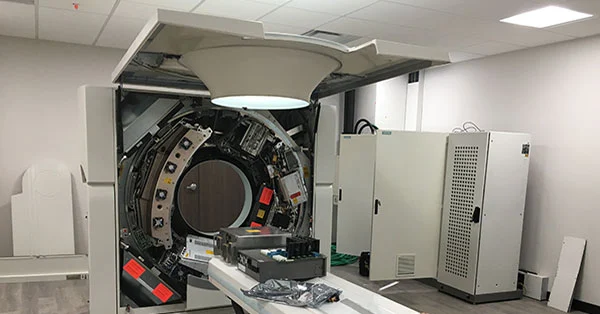Precision and Care: The Crucial Steps of Medical Equipment Installation
The world of healthcare relies heavily on cutting-edge medical equipment to diagnose and treat patients effectively. Behind every MRI, X-ray machine, CT scanner, and ultrasound device lies a acomplex and meticulous process: medical equipment installation. In this article, we’ll explore the essential steps and considerations that make this installation process so vital.

Site Assessment and Selection
The journey begins with selecting the ideal location within a healthcare facility for the new medical equipment. This choice takes into account factors such as available space, proximity to necessary utilities (like power and water), and the ability to meet stringent safety and regulatory requirements.
Room Preparation
The chosen space must undergo thorough preparation to accommodate the specific equipment. This includes structural modifications, electrical upgrades, and considerations for ventilation and safety features. Shielding for radiation-based equipment, for instance, is critical to protect both patients and healthcare professionals.
Equipment Delivery and Unpacking
Once the space is ready, the equipment is delivered and carefully unpacked. Medical equipment is often large and delicate, requiring a skilled team to handle it with precision. Delicate sensors and high-tech components demand gentle and meticulous handling to prevent damage.
Installation and Assembly
Medical equipment is assembled with meticulous attention to detail. Highly trained technicians, engineers, and specialists follow the manufacturer’s instructions to set up the equipment correctly. This phase may involve the installation of intricate components like imaging sensors, computer systems, and calibration of instruments.
Electrical and Mechanical Integration
The integration of electrical and mechanical systems is crucial to ensure seamless operation. This phase involves connecting the equipment to power sources, data networks, and other relevant systems. Calibration and fine-tuning are carried out to guarantee accurate results.
Testing and Quality Assurance
Rigorous testing protocols are executed to validate the equipment’s functionality and safety. This step includes performance checks, diagnostic tests, and adherence to regulatory standards. Quality assurance measures help identify any potential issues before the equipment becomes operational.
Staff Training
Healthcare professionals who will operate the equipment undergo specialized training. This training ensures that they can effectively and safely use the equipment, interpret results, and troubleshoot minor issues.
Data Integration and Networking
In our interconnected world, medical equipment often needs to be integrated into larger healthcare systems. This step involves configuring the equipment to communicate seamlessly with electronic health records (EHR) systems and other hospital networks.
Final Inspections and Approvals
Healthcare regulatory bodies typically conduct final inspections and approvals to ensure compliance with safety and quality standards. This step is crucial to ensure that the equipment is ready for patient use.
The installation of medical equipment is a meticulous and highly regulated process, critical to the delivery of quality healthcare. Each step involves a team of skilled professionals, from site selection to final inspections, all working towards the common goal of providing accurate diagnostics and better patient care. This precision and care behind the scenes are the foundation of modern healthcare’s diagnostic capabilities, saving lives and improving health outcomes.



